
La Earthcache / The Earthcache
► Contexte géologique local
La Pointe du Castelli offre une coupe naturelle de roches métamorphiques et magmatiques.
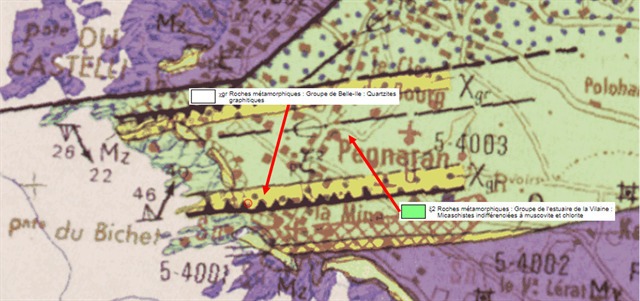
Cette zone permet d'observer deux formations métamorphiques aux caractéristiques et aux comportements face aux compressions tectoniques bien différents.
~ Quartzites graphitiques
Les quartzites graphitiques sont des roches métamorphiques siliceuses à grains fins présentant une alternance de lits fins à teinte sombre, mélanocrate (bleu nuit à noir) et de lits pluri millimétriques clairs (leucocrate).
Les strates sombres sont d'anciennes phtanites métamorphisées.
Cette couleur noire s'explique par sa richesse en matière carbonée (d'où le terme de graphitique) donnant une texture grasse et des traces noirs sur les doigts quand on frotte la roche.
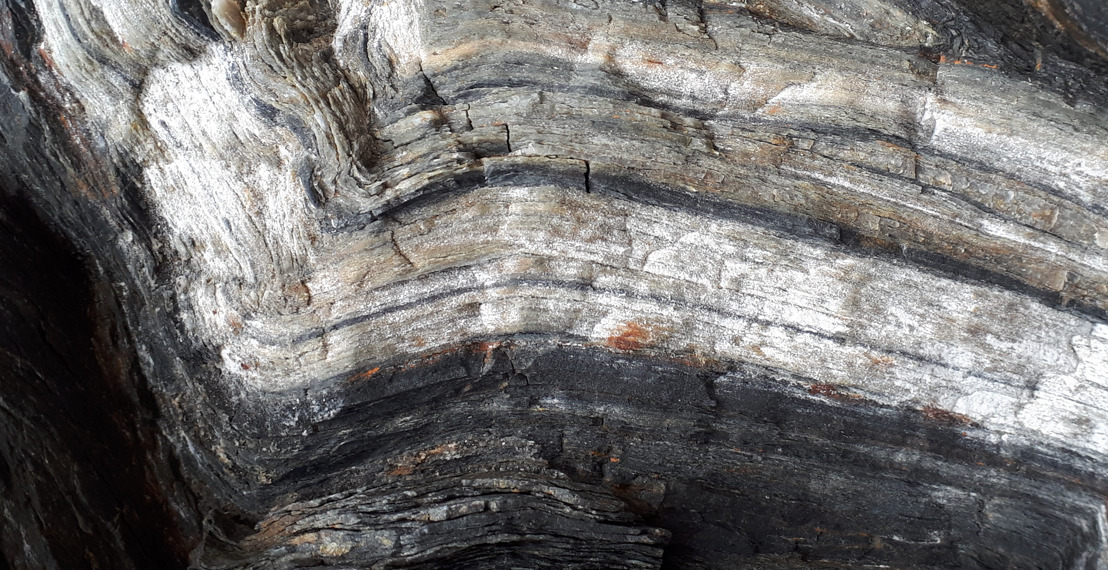
~ Micaschistes à muscovite et chlorite
Les micaschistes du Castelli sont des métatufs finement foliés composés de quartz et de micas blancs.
C'est une roche à la teinte claire (leucocrate) se caractérisant par sa richesse en muscovite, un minéral blanc brillant donnant un aspect nacré à la roche quand elle est exposée soleil.
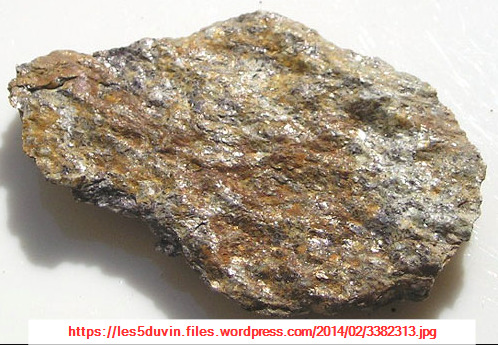
► Ca plie ou ça casse, une histoire de compétence
Cette notion est relative à la façon dont une roche peut se déformer. Une roche est dite compétente si elle est rigide, entrainant sous une contrainte sa fracturation plutôt que son plissement.
A contrario, une roche est dite ductile lorsqu'elle peut se déformer sans « cassure » (mise en place plis souples, rubanées). Elle est donc incompétente.
La compétence d'une roche est fonction de sa nature.
A faible profondeur, les grès et calcaires sont compétentes alors que les roches riches en matière carbonée sont incompétents, le carbone lubrifiant la roche et facilitant son extrême déformation.
► Classification descriptive des plis
Un pli est une structure courbe due à une déformation ductile de la roche.
Plusieurs caractéristiques permettent de classifier un pli:
~ l'épaisseur du pli : un pli est isopaque si l'épaisseur des couches est constante, anisopaque sinon.

~ le pendage du plan axial : un pli est dit droit si son plan axial est vertical, déjeté s'il est oblique et couché si son plan axial est presque horizontal

La complexité des plis détermine une classification descriptive, dont voici quelques exemples :
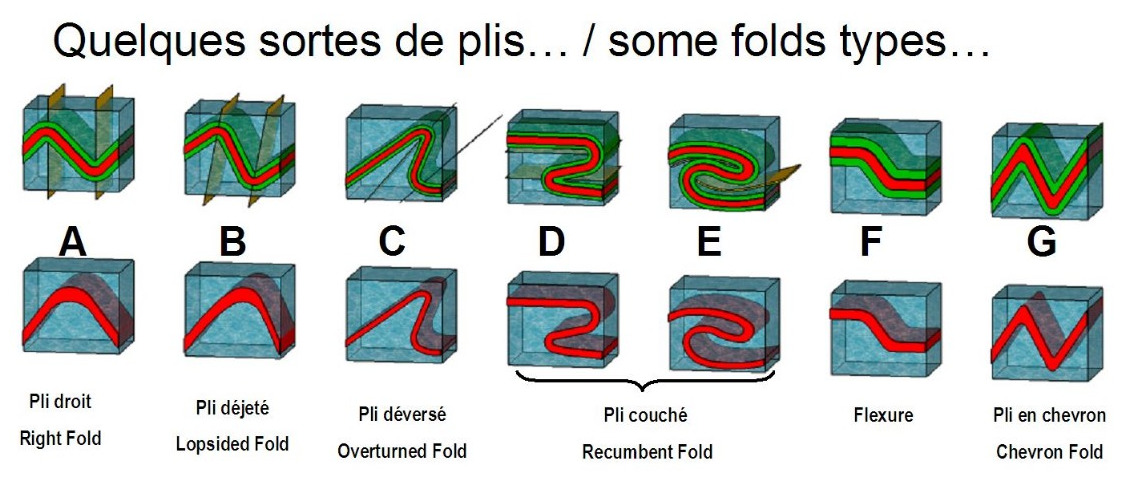
► Local geological context
The Pointe du Castelli offers a natural cut of metamorphic and magmatic rocks.
This zone makes it possible to observe two metamorphic formations with very different characteristics and behavior in the face of tectonic compressions.
~ Graphitic quartzites
Graphitic quartzites are fine-grained siliceous metamorphic rocks with an alternation of fine dark-colored, melanocratic beds (midnight blue to black) and light pluri-millimeter beds (leucocratic).
The dark strata are ancient metamorphosed phtanites.
This black color is explained by its richness in carbonaceous matter (hence the term graphitic) giving a greasy texture and black marks on the fingers when rubbing the rock.
~ Muscovite and chlorite mica schists
Castelli mica schists are finely foliated meta-eggs composed of quartz and white mica.
It is a light colored rock (leucocratic) characterized by its richness in muscovite, a brilliant white mineral giving a pearly appearance to the rock when it is exposed to the sun.
► It bends or it breaks, a story of competence
This notion relates to how a rock can deform. A rock is said to be competent if it is rigid and therefore tends to fracture rather than bend when subjected to a state of stress.
Conversely, a rock is said to be ductile when the latter can be deformed without “breaking” (placing flexible, banded folds), it is therefore incompetent.
The competence of a rock depends on its nature.
At shallow depths, sandstones and limestones are competent while rocks rich in carbonaceous matter are incompetent, the carbon lubricating the rock and facilitating its extreme deformation.
► Classification folds
A fold is a curved structure due to a ductile rock deformation.
Many features used to classify a crease. Among the most frequent qualifiers are:
~ Fold thickness : a bend is isopach if the thickness of the layers is constant, anisopaque otherwise.
~ The dip of the axial plane : a fold is said right if the axial plane is vertical, lopsided if oblique and lying if its axial plane is almost horizontal.
The complexity of shapes pleated is causing a descriptive classification, with the following main types (see French description).
► Sources bibliographiques / Bibliographical sources
Les Questions / The Questions
Questions pour valider :"Quelle compétence au Castelli ?"
Questions to validate: "What skill at Castelli?"
- Question 0 : Prenez une photo de vous ou d'un élément avec l'océan en arrière plan.
Cette photo devra au choix nous être transmise avec les réponses ou être ajoutée à votre log.
-Question 0 : Take a photo of yourself or something with the ocean in the background.
This photo must either be sent to us with the answers or added to your log.
Après avoir descendu l'escalier donnant accès à la plage, vous voici devant une avancée de la falaise perpendiculaire à la mer, se terminant par une petite grotte à droite (photo WP1).
After descending the stairs giving access to the beach, you find yourself in front of a projection of the cliff perpendicular to the sea, ending with a small cave on the right (photo WP1).
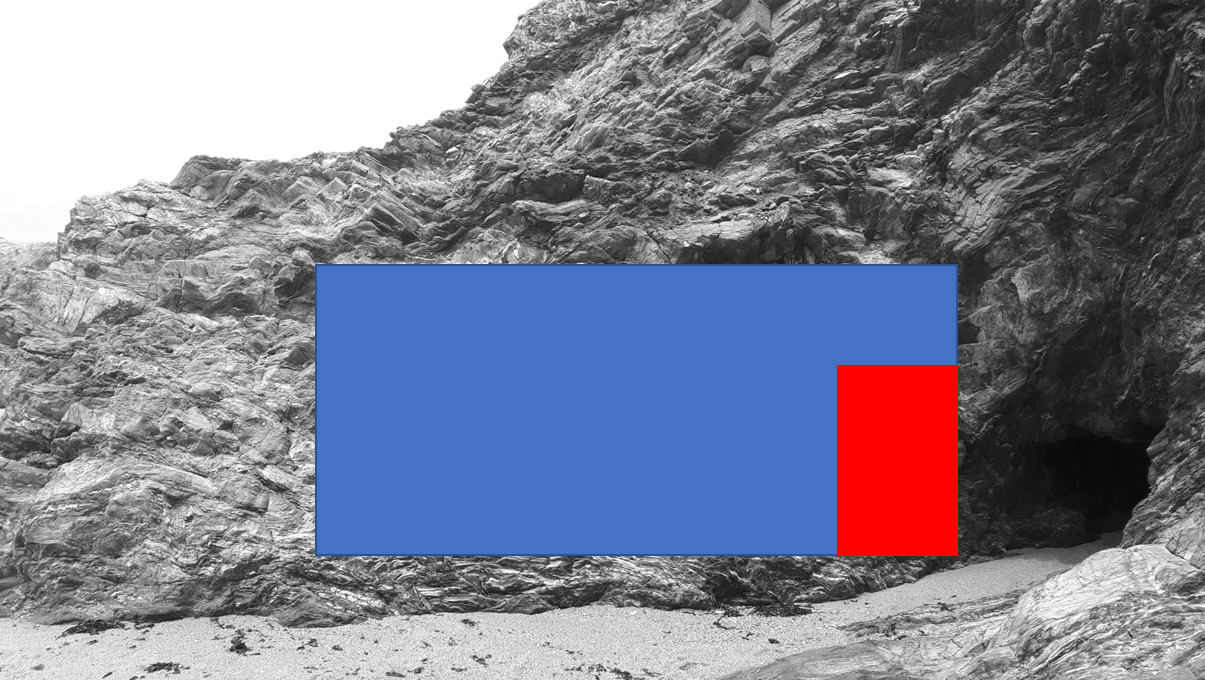
- Question 1 : Décrivez la roche sous la zone bleue. Déduisez-en la formation métamorphique se trouvant devant vous.
- Question 1 : Outline the rock below the blue area. Deduce the metamorphic formation in front of you.
- Question 2 : Observez les plis sous la zone bleue et qualifiez le degré de compétence/incompétence de cette roche. Quel composant de la roche explique cette propriété ?
- Question 2 : Observe the folds under the blue area and rate the skill level / incompetence of this rock. What component of the rock explains this property?
- Question 3 : Caractérisez le pli sous la zone rouge (épaisseur, pendage du plan axial, angle de plissement). Parmi la classification des plis, duquel s'agit-il ?
- Question 3: Characterize the fold under the red zone (thickness, dip of the axial plane, fold angle). Among the classification of folds, which one is it?
Vous pouvez vous loguer sans attendre notre confirmation,
mais vous devez nous envoyer les réponses en même temps soit par mail via notre profil (
fafahakkai), soit via la messagerie geocaching.com (Message Center).
S'il y a des problèmes avec vos réponses nous vous en ferons part.
Les logs enregistrés sans réponses seront supprimés.
You can log this cache without waiting for our confirmation, but you must send us the answers at the same time, by e-mail via our profile (fafahakkai) or by the system of Message Center of geocaching.com.
If there is a problem with your answers we will notify you. The logs recorded without answers will be deleted.
Rappel concernant les « Earthcaches »: Il n'y a pas de conteneur à rechercher ni de logbook à renseigner. Il suffit de se rendre sur les lieux, de répondre aux questions ci-dessus et de nous renvoyer les réponses.
Reminder concerning "Earthcaches": there is neither a container to look for nor a logbook to sign. One need only go to the location, answer to the differents questions and send us the answers.